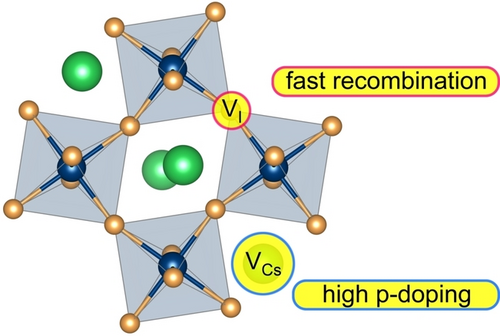Origins of p-Doping and Nonradiative Recombination in CsSnI3
Graphical Abstract
Abstract
It is commonly believed that the spontaneous p-doping in Sn-based perovskites is caused by Sn vacancies. By performing rigorous first-principles calculations for a prototypical Sn-based perovskite CsSnI3, we reveal that, in fact, the defects dominating p-doping are Cs vacancies. The reason that adding extra Sn2+ could reduce p-doping is that Cs and Sn present the same changing trend in terms of chemical potentials, and thus inhibiting the formation of Sn vacancies will also limit the formation of Cs vacancies. Moreover, we show that I vacancies are the dominant nonradiative recombination centers, and can result in sizable nonradiative losses, which explains why the experimentally measured carrier lifetime is only a few nanoseconds even if p-doping is suppressed. This work provides new insights into the origins of p-doping and nonradiative recombination in CsSnI3, and suggests that minimizing the formation of Cs and I vacancies is critical to realizing the best device performance.
Conflict of interest
The authors declare no conflict of interest.
Open Research
Data Availability Statement
The data that support the findings of this study are available from the corresponding author upon reasonable request.





